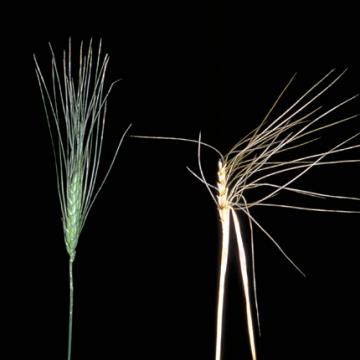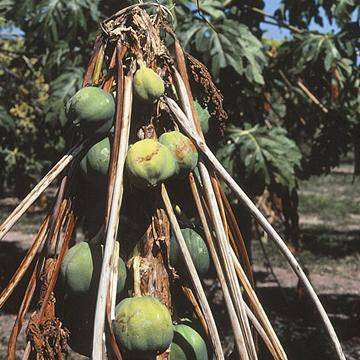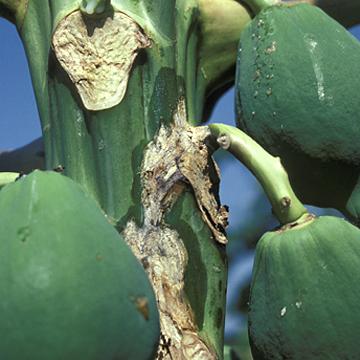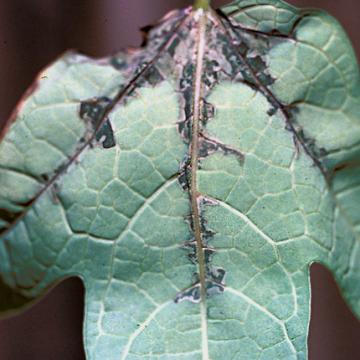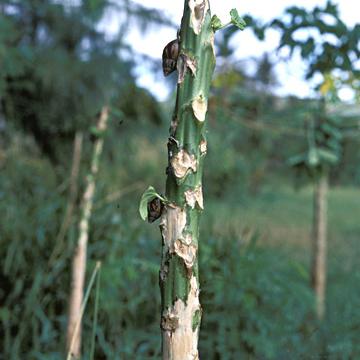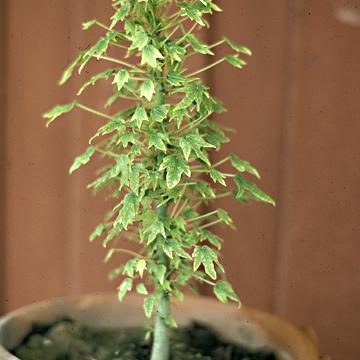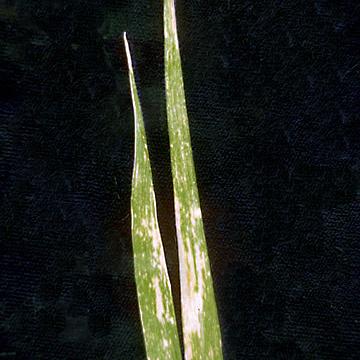DISEASE: Aster yellows
HOST: Wheat
Healthy head (left) and diseased head (right). Diseased seedlings may die within 2 to 3 weeks. Infected heads of surviving plants are small and sterile, with distorted awns.

Aster yellows | Wheat
DISEASE: Aster yellows
HOST: Wheat (Triticum aestivum)
PATHOGEN: 'Candidatus Phytoplasma asteris'
PATHOGEN SYNONYM: Phytoplasma Aster yellows group
SOURCE: L. N. Chiykowski
DISEASE: Bacterial blast and black pit
HOST: Citrus (Lemon)
The term "black pit" refers to black lesions on fruit, which may be specks or large, sunken pits as seen here. They also may be light tan, later becoming reddish brown to black.
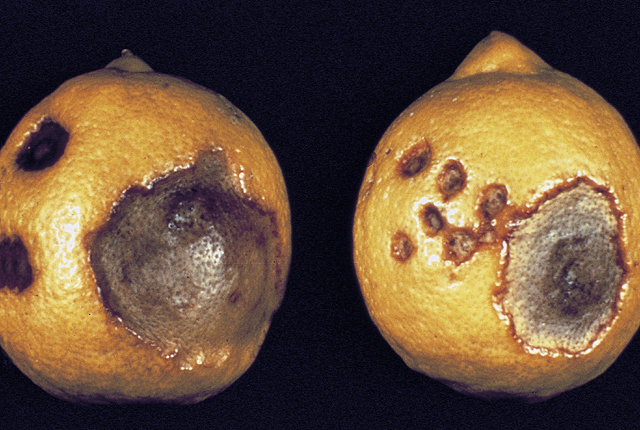
Bacterial blast and black pit | Citrus (Lemon)
DISEASE: Bacterial blast and black pit
HOST: Citrus (Lemon) (Citrus limon)
PATHOGEN: Pseudomonas syringae pv. syringae
SOURCE: J. Menge
DISEASE: Bacterial decline
HOST: Papaya
Bacterial decline of papaya, historically called St. Croix decline, was thought to be caused by a fungus. This picture shows a papaya with dead top and side branches, a severe stage of the disease.
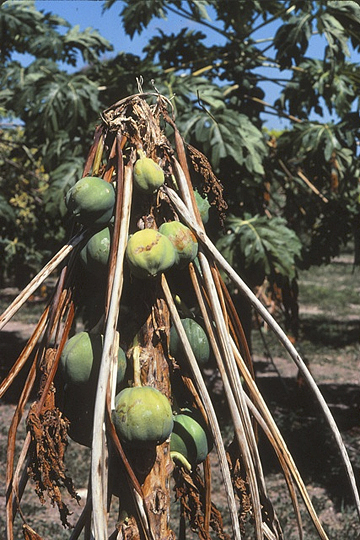
Bacterial decline | Papaya
DISEASE: Bacterial decline
HOST: Papaya (Carica papaya)
PATHOGEN: Erwinia papayae
SOURCE: M. Schroth
DISEASE: Bacterial decline
HOST: Papaya
Water-soaked papaya stem in St. Croix. Dark, water-soaked, greasy lesions occur on stems and leaves. The causal agent differs somewhat from descriptions of Erwinia papayae D strains in Micronesia.
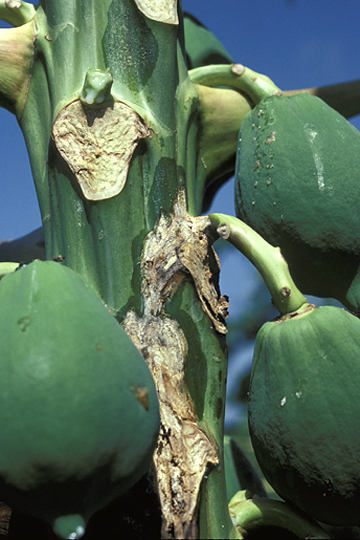
Bacterial decline | Papaya
DISEASE: Bacterial decline
HOST: Papaya (Carica papaya)
PATHOGEN: Erwinia papayae
SOURCE: M. Schroth
DISEASE: Bacterial decline
HOST: Papaya
Bacterial invasion of leaf veins and adjacent tissues of papaya in Micronesia. This disease has also been called canker, dieback, and blight.
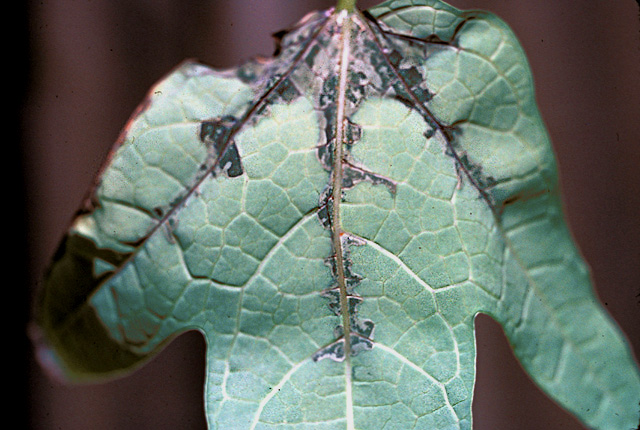
Bacterial decline | Papaya
DISEASE: Bacterial decline
HOST: Papaya (Carica papaya)
PATHOGEN: Erwinia papayae
SOURCE: E. Trujillo
DISEASE: Bacterial decline
HOST: Papaya
Complete destruction of papaya plantation in Micronesia. Only a severely damaged trunk remains.
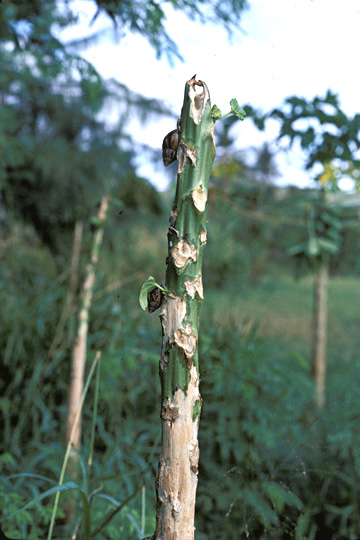
Bacterial decline | Papaya
DISEASE: Bacterial decline
HOST: Papaya (Carica papaya)
PATHOGEN: Erwinia papayae
SOURCE: E. Trujillo
DISEASE: Bacterial fasciation
HOST: Papaya
Fasciation symptoms of papaya. Causal agent is unknown.
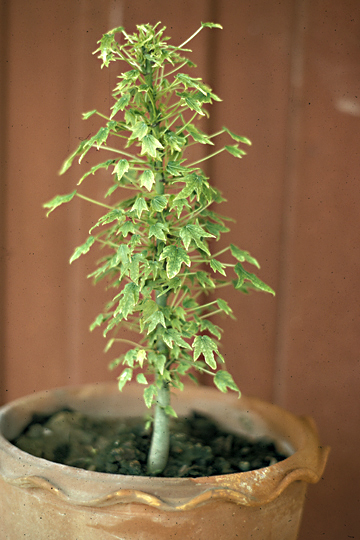
Bacterial fasciation | Papaya
DISEASE: Bacterial fasciation
HOST: Papaya (Carica papaya)
PATHOGEN: Causal agent unknown
SOURCE: A. Alvarez
DISEASE: Bacterial leaf blight
HOST: Wheat
Diseased leaves with whitish blotches. Initial water-soaked spots become necrotic and progress from gray-green to tannish white.
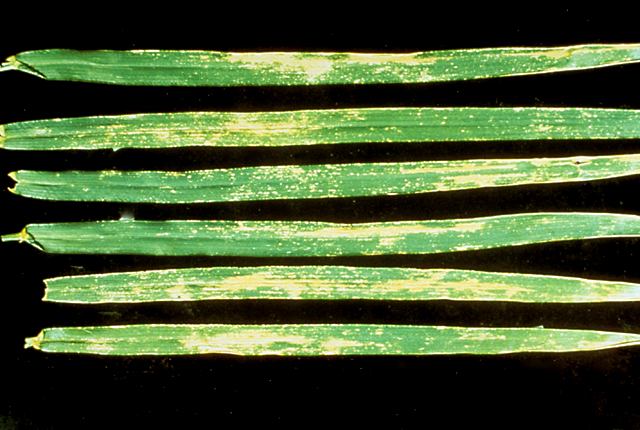
Bacterial leaf blight | Wheat
DISEASE: Bacterial leaf blight
HOST: Wheat (Triticum aestivum)
PATHOGEN: Pseudomonas syringae pv. syringae
SOURCE: J. Otta
DISEASE: Bacterial leaf blight
HOST: Wheat
Diseased leaves with whitish blotches. The disease begins as water-soaked spots and then become necrotic and progresses from gray-green to tannish white.

Bacterial leaf blight | Wheat
DISEASE: Bacterial leaf blight
HOST: Wheat (Triticum aestivum)
PATHOGEN: Pseudomonas syringae pv. syringae
SOURCE: L. Claflin


